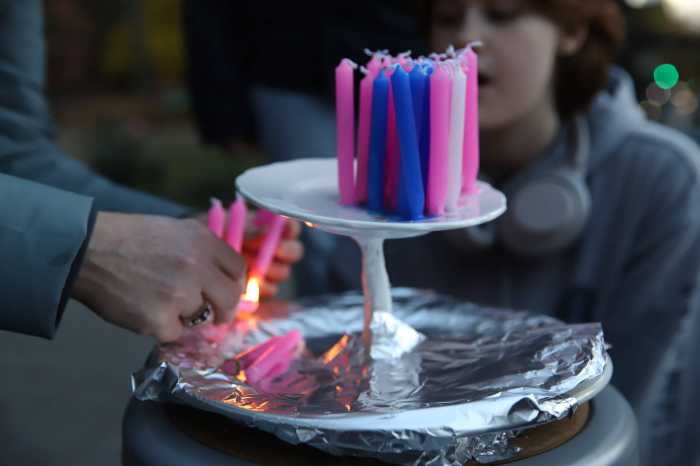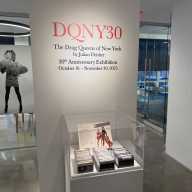Performer portrays the murderous results of perceiving African Americans as “the others”
Imagine being considered disposable—as in easily killed, haphazardly mourned and ultimately forgotten.
If you think this is a fantasy, artist and performer James Scruggs is hoping to convince you otherwise. Not by proselytizing or accusing or challenging but by delivering an artistic experience that allows one a visceral feeling of what it means to be cast off by society and dispassionately disposed of.
Scruggs, whose piece, aptly titled “Disposable Men,” runs at HERE Arts Center said he started developing his most ambitious piece to date back in 2000. As shocked by the ways in which black men are killed in today’s world, he believes that our society recognizes something else in this brutality.
“I realized that there is this fascination about it,” he said. “It’s like killing animals.”
Scruggs added, “I wanted to explore the erotic element of this, that there is a certain beauty in seeing black men die. It’s like a car accident that’s horrible, but you have to look.”
Images of movie monsters—Frankenstein, The Wolf Man and King Kong—are juxtaposed with images of black men––being murdered, being lynched among many types of horrors––murder, lynching and other types of horror––generated by up to nine different film tracks projected in the space at any given time in the 90-minute piece. One portion of the piece chronicles the Tuskegee syphilis experiments, which ran for 40 years beginning in the early ’30, in which infected African-American men unaware of their disease were used to allow researchers see how the disease progressed.
“Dr. Frankenstein created this monster who was part human, and then he did whatever he wanted with him,” Scruggs said. “And King Kong was a big black animal taken from Africa to be sold and exploited. Or Wolf Man turning into a monster in front of your eyes. He’s not big, but boy is he scary when he turns black.”
Scruggs emphasized, however, that the piece is not intended to say, “White people are bad.” The piece is not about instilling racial anger or guilt in any way. Rather he is seeking to create an experience that allows an understanding of all the factors that contribute to someone’s even being considered disposable. Scruggs noted that gays, Jews and any marginalized group can will likely understand challenge the piece presents.
In talking about other elements of the piece, Scruggs noted that lynching was still commonplace a mere 40 years ago, and that much more recently, in 1999, New York City police shot an African immigrant, Amadou Diallo, 41 times, hitting him with 19 bullets, as he reached for what turned out to be his wallet. Scruggs said he was horrified and intrigued how four policemen could be so terrified of one black man that Diallo became a monster to them.
Through mixed media and technology, Scruggs has created an immersive piece. He emphasized that this is not “conceptual art,” but a narrative piece that uses technology to support the storytelling. Scruggs, a thoughtful, enthusiastic and charming man, stressed that he is not preaching, and wants people to come away from the piece with an understanding not just of how human beings can come to be disposable but what it feels like to be disposed of.
It is not a piece of anger or answers but an exploration, Scruggs said—art and theater combined to explore an issue that’s so present in our culture and so powerful and yet, ironically, so easily ignored.
gaycitynews.com




































